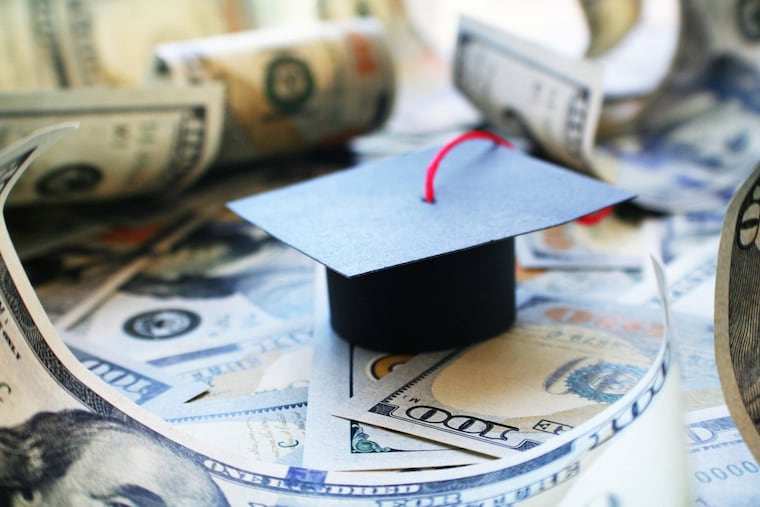Student loan crisis is undermining the U.S. economy. Here’s a way out.
There is a student loan crisis. Forty-six million Americans together owe a staggering $1.5 trillion in student loans.

There is a student loan crisis. Forty-six million Americans together owe a staggering $1.5 trillion in student loans. That’s a three-fold increase in just the last decade and more than double the amount of what we owe on our credit cards.
The financial stress on those with student loans is overwhelming. Five million borrowers have not made a payment in more than a year, and the number is set to increase. Recent student loan borrowers have stopped making payments much sooner after they get their loans than those who got loans just a few years ago.
The burden of student loans weighs most heavily on young people, with about two-thirds of all student debt owed by millennials and generation Z, which is just now entering college. But older Americans also owe an increasing amount of student loan debt. A growing number of baby boomers are taking out loans to help kids and grandkids. Several hundred thousand retired Americans have their Social Security or other federal government support payments garnisheed to pay defaulted loans.
Minorities also bear a disproportionate load. More than three-quarters of African Americans have to take out a student loan to get a college education, compared to less than 60% of white students. Making matters worse, a disproportionate number of African Americans pursue their higher education at for-profit colleges, where less than half of attendees ever get a degree. A disturbing share of African Americans are taking on debt with little hope of ever paying it back.
Student loan debt has surged for a number of reasons. State-supported public colleges and universities have seen their public funding slashed in the wake of the Great Recession. The value of the private endowments used to fund grants and scholarships has fallen, and it has become much more difficult to use home equity loans to finance tuition and other educational expenses.
Even more pernicious, the rapid increase in student loan debt has driven up the demand for higher education, which in turn has fueled a rapid rise in tuition and fees, requiring students to borrow even more. The price of education has skyrocketed 10-fold in the last generation, 30 times faster than the overall inflation rate. Students are on a debt treadmill.
The burden of student loans won’t push the economy into a recession – at least not by itself – but it is steadily undermining it. Most student loans are made by the federal government, so if borrowers stop making payments it is a taxpayer problem. This is a big difference from the subprime mortgages that caused the Great Recession a decade ago, because those mortgages were owed to financial institutions that failed when homeowners stopped paying.
However, student loans are a corrosive on the economy. Student loans are slowing new business start-ups and causing younger Americans to delay marriage, having children, and becoming homeowners. And as more borrowers default on their mortgages, it will also ripple through the rest of the economy in the form of damaged credit, slowing further borrowing and the economic activity that flows from that.
To address the student loan crisis, we must give those with student loans a meaningful path out from under their debt and take steps to address the flaws in the economic model of higher education that have put so many into this predicament.
An effective and fair approach to help existing student loan borrowers is to expand the income-based repayment plans already in place. The current most common plan limits a borrower’s payments to no more than 10% of income, and after 20 years of payments what debt is still owed is forgiven by the federal government. This plan mostly helps lower-income and minority borrowers, but it could be even more helpful if payments were, say, limited to 5% of income, with debt forgiveness after 10 years.
Instead of using taxpayer support to make more student loans, let’s use that support to increase the supply of educational services, which should make tuition more affordable for everyone. Community colleges, technical schools, historically black colleges and universities, and e-learning stand out for support. They are particularly effective at raising educational attainment, and they are in every corner of the country.
And let’s make sure that no institution of so-called higher learning offers a door into unsustainable debt. There should be student loan limits based in part on graduation and post-graduation employment metrics of each educational institution, forcing all institutions of higher education — including so-called for-profit colleges — to focus on the success of their students or find themselves cut off from the government support on which their own success depends.
Taken together, the benefits of these policies would be meaningful. It would reduce the financial stress on tens of millions of Americans and make higher education more affordable. This will increase educational attainment, and lift the economy’s productivity and long-term growth.
Mark Zandi is chief economist at Moody’s Analytics.